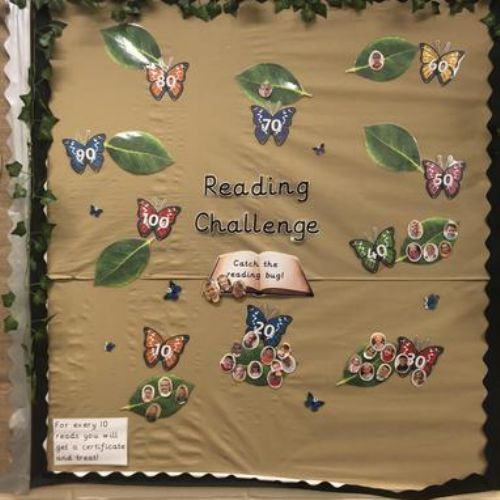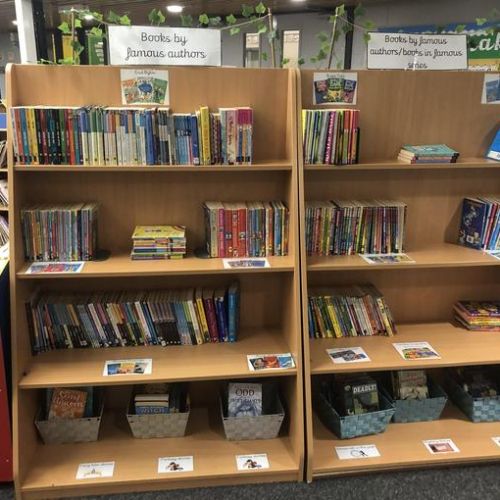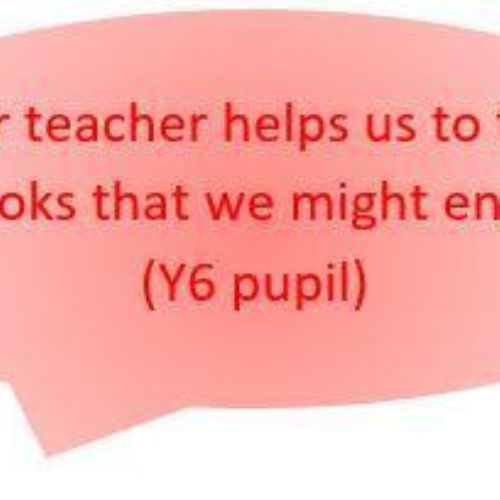Reading
Leadership of Reading at Grove Primary School.
Accountable: Mrs Kelly Hough and Mrs Lauraine Barnes
Responsible: Miss Beth Jones, Mr Andrew Rough, Mrs Danielle Gillings
Our Reading Intent
As readers we:
- Have a love of reading
- Know the skills needed to be a competent reader
- Are exposed to a range of texts in order to not only reflect the pupils' lives but to also open windows to a range of diverse literary experiences
- Understand fluency, including expression, volume, smoothness and pace
- Read aloud and listen to texts being read aloud daily
- Look for reading opportunities everywhere, not just in books
- Are explicit about the reason for reading
- Talk about and ask questions about their reading
- Learn and discuss new vocabulary
- Listen to recommendations and recommend books to our peers
Our Five Pillars of Reading

Our Five Pillars of Reading embody the integral elements of our reading principles at Grove. The strand along the top is our DERIC strand... Decode, Explain, Retrieve, Interpret and Choice. Our Reading curriculum is built around these key elements which are developed and explored in our Reading lessons.
Our DERIC skills

Reading Progression Assessment Document
The importance of reading fluency
Reading fluency is the ability to read with speed, accuracy and proper expression. It is a skill that allows us to follow text, picture its descriptions, and hear the words whether we read aloud or in our heads.
In order to understand what they read, children must be able to read fluently whether they are reading aloud or silently. Readers who have not yet developed fluency read slowly, word by word and their reading is quite choppy; they focus so much of their energy on decoding words that understanding of the text is lost. However, fluent readers do not need to concentrate on decoding the words. They can focus their attention on what the text means, and they can make connections among the ideas. In other words, they recognise words and comprehend at the same time.
There are several things that you can do with your child when reading with them to help improve their reading fluency:
-
Allowing children to re-read books, particularly in Early Years and Key Stage 1, enables children to build up their fluency and their confidence in word reading.
-
Reading to your child - Modelling reading allows children to listen to good examples of fluent reading, children learn how a reader's voice can help written text makes sense.
-
Choral reading - This involves reading the words together at the same time. This could be good if a lot of decoding has been needed to read a sentence or paragraph. Going over it again together will not only help fluency and confidence, but also help comprehension.
-
Echo reading - An adult reads a sentence or paragraph of a text. Then the child repeats it - or echoes it back - using the same expression. Research shows that this is a very effective method to improve fluency.
-
Repeated oral reading - Giving pupils frequent opportunities to read aloud the same part of a text additionally develops their reading fluency.
Our Reading Phase Expectations
Reading Assessments
- Reception Reading Assessment.pdf
- Year 1 Reading Assessment.pdf
- Year 2 Reading Assessment.pdf
- Year 3 Reading Assessment.pdf
- Year 4 Reading Assessment.pdf
- Year 5 Reading Assessment.pdf
- Year 6 Reading Assessment.pdf
Example of Year 3 Reading Phase Expectations

How do we teach Reading at Grove?
We use all of the following to teach reading:
- Phonics Teaching using Essential Letters and Sounds (ELS)
- Exploring etymology and morphology in words
- Small group reading sessions (KS1)
- Daily whole class reading sessions to model and focus on decoding, fluency and comprehension skills (small groups may be used during this time) in KS2
- Individual Reading
- Story Time (all classes every day)
- Developing fluency through paired reading, choral reading, repeated reading
Teaching is underpinned by strong Assessment for Learning and ongoing daily, weekly, monthly half termly tracking and gaps analysis.




